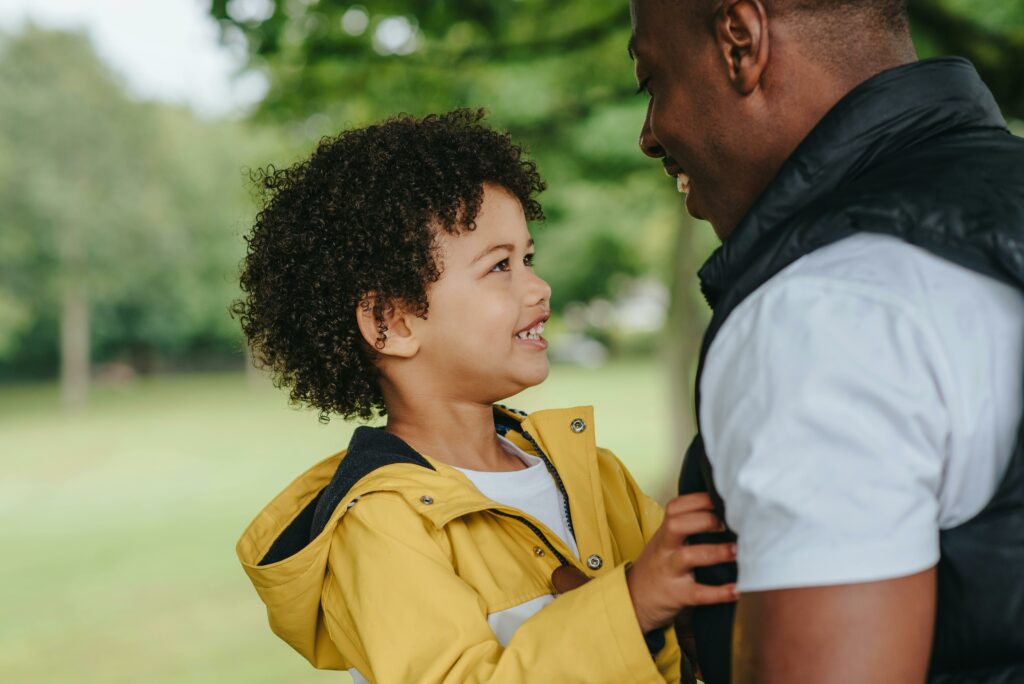Building Relationships With Your Child by Active Listening
go.ncsu.edu/readext?1001862
en Español / em Português
El inglés es el idioma de control de esta página. En la medida en que haya algún conflicto entre la traducción al inglés y la traducción, el inglés prevalece.
Al hacer clic en el enlace de traducción se activa un servicio de traducción gratuito para convertir la página al español. Al igual que con cualquier traducción por Internet, la conversión no es sensible al contexto y puede que no traduzca el texto en su significado original. NC State Extension no garantiza la exactitud del texto traducido. Por favor, tenga en cuenta que algunas aplicaciones y/o servicios pueden no funcionar como se espera cuando se traducen.
Português
Inglês é o idioma de controle desta página. Na medida que haja algum conflito entre o texto original em Inglês e a tradução, o Inglês prevalece.
Ao clicar no link de tradução, um serviço gratuito de tradução será ativado para converter a página para o Português. Como em qualquer tradução pela internet, a conversão não é sensivel ao contexto e pode não ocorrer a tradução para o significado orginal. O serviço de Extensão da Carolina do Norte (NC State Extension) não garante a exatidão do texto traduzido. Por favor, observe que algumas funções ou serviços podem não funcionar como esperado após a tradução.
English
English is the controlling language of this page. To the extent there is any conflict between the English text and the translation, English controls.
Clicking on the translation link activates a free translation service to convert the page to Spanish. As with any Internet translation, the conversion is not context-sensitive and may not translate the text to its original meaning. NC State Extension does not guarantee the accuracy of the translated text. Please note that some applications and/or services may not function as expected when translated.
Collapse ▲Parents have a lot on their plate. When things get busy, it’s easy to brush off things and people around you in order to contend with whatever “emergency” or urgent situation is happening. However, it’s important that no matter how small your child’s situation may seem to be sure to give them time and attention in those moments.
By investing the time and effort to build relationship in the early years, your child will be more likely to come to you with problems or issues when they are older. One way to do this is through active listening. Active listening is a useful tool for building relationships in general, but especially helpful with young children.

By investing the time and effort to build relationship in the early years, your child will be more likely to come to you with problems or issues when they are older.
How to Be An Active Listener:
- Get on their eye level and make direct eye contact.
- Give them your full undivided attention. This means put your phone and devices on silent and away from your view. You don’t want your phone to begin alerting you of incoming messages and become distracted.
- Don’t interrupt. Let them say what they need to say. The job of an active listener is hearing and understanding what is being said.
- Nod and use facial expressions to show you are engaged and listening.
- Show you are listening and understand by repeating back or summarizing what they said or how they feel.
Sometimes children will know exactly what they want to say and communicate it clearly. However, this isn’t always the case. Have you ever been in a situation in when you were not exactly sure how you felt about something? Children experience this as well.
Preschoolers are developing emotionally and are learning to put a name to the different feelings they experience. It can be difficult at times for them to put into words how they are feeling. Active listening offers parents the opportunity to hear what is happening and help guide their child to understand their emotions.
How to Reflect Your Child’s Emotions:
The last step of active listening is to repeat back or summarize what they said or how they are feeling. Summarizing what was said can be simple compared to reflecting their emotions. Here are a few tips for repeating back how they are feeling to guide conversation:
- Listen to your child. Use words to put a name to their emotion. If you’re unsure, it’s okay to take a guess and open a conversation about whether or not that is it. Children will usually let you know if that’s not how they feel.
- “It seems like you’re feeling ___.”
- “You must be feeling _____.”
- “Something seems to be bothering you.”
- Be there. Sometimes words aren’t needed. Just sitting next to them and offering a hug is enough.
- Agree to disagree. You may not agree on how they are feeling or reacting to a situation. Instead of trying to stop them from feeling upset, help them learn how to navigate those feelings in a healthy way.
- Sometimes how people act on the outside doesn’t match how they feel on the inside. It could be that they are feeling two emotions at once. Have a conversation about different kinds of feelings and help your child understand them.
Below is the link for the May Growing Together Newsletter. It includes tips on raising responsible children, setting rules and expectations, and a calendar of activities.
May Growing Together Newsletter: May24 (1)
References:
- Centers for Disease Control and Prevention. (2019, November 5). Active listening. Centers for Disease Control and Prevention.





